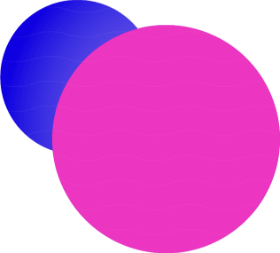Table of Contents
If you run a restaurant, you probably already know how important it is to provide excellent service to your customers.
But how do you improve your restaurant service in the modern age, when customer expectations are higher than ever, and competition is fierce?
In this article, we will share with you incredible ways to improve your restaurant service, based on the latest trends and best practices in the industry.
Our team specialize in consulting and providing solutions to businesses like yours, and with more than a decade of experience at this point, we’re confident that you can trust us.
So, let’s get started!
Why is Improving Restaurant Service Important?
Improving service is important because it affects how happy and loyal customers are, which leads to more sales and business for your restaurant!
Good word-of-mouth and online reviews happen because they help bring in new customers while avoiding negative feedback and protecting the restaurant’s name, a key thing since 50% of customers, according to a Zendesk report, will switch to a competitor after just one bad experience.
Better service also benefits restaurant staff, creating a positive work environment.
Happy and productive staff make the restaurant run smoothly, which enhances the dining experience. Money is important, but getting praised for good service is a rewarding feeling that is hard to match.
Also, the effort to improve service makes customer lifetime value higher, meaning that existing customers keep giving money. In short, focusing on great service is not just a way to please customers but also to make the restaurant stronger in the industry.
In short – giving great restaurant service is one of the most important fundamentals of any restaurant. Not to mention, having incredible customer service is a contributing factor to revenue.
Forbes mentioned that 1 in 4 customers are willing to pay up to 10% more if the restaurant’s service is excellent!
How to Improve Your Restaurant Service
But how do you improve your restaurant service exactly? It’s not just as simple as “giving staff training”. So let’s get to the practical tips that you can try out.
Improve Ordering Accuracy & Kitchen Speed

Ordering accuracy and speed are very important for restaurant service – no one wants a wrong or late order!
Ordering accuracy depends on experience and tools. For example, a restaurant manager with years of experience will have fewer mistakes than a new server.
Also, if you use tools and software well, ordering accuracy will get better.
Having a good menu design and an online ordering system will help with ordering accuracy because you remove the human error aspect of it.
Also, you only need to set it up once, and maybe update it sometimes with customer feedback.
But make sure that you include clear descriptions and pictures – whether it’s on a physical or digital menu, as that’s the lowest effort-highest reward way to improve order accuracy!
You can also use and improve SOPs for ordering and the kitchen. You can have an expeditor to check and control the orders.
The expeditor will watch the time and make sure the orders are right and nothing leaves the kitchen without the expeditor’s OK.
You can also use smart SOPs to make ordering accuracy better like a reward system. This will make your waitstaff feel encouraged and want to do more than just make order accuracy better but also make their customer service better.
Feel free to take a look at our full guide on improving order accuracy to learn more!
Include Soft Skill Training in Your Restaurant Training Regiment
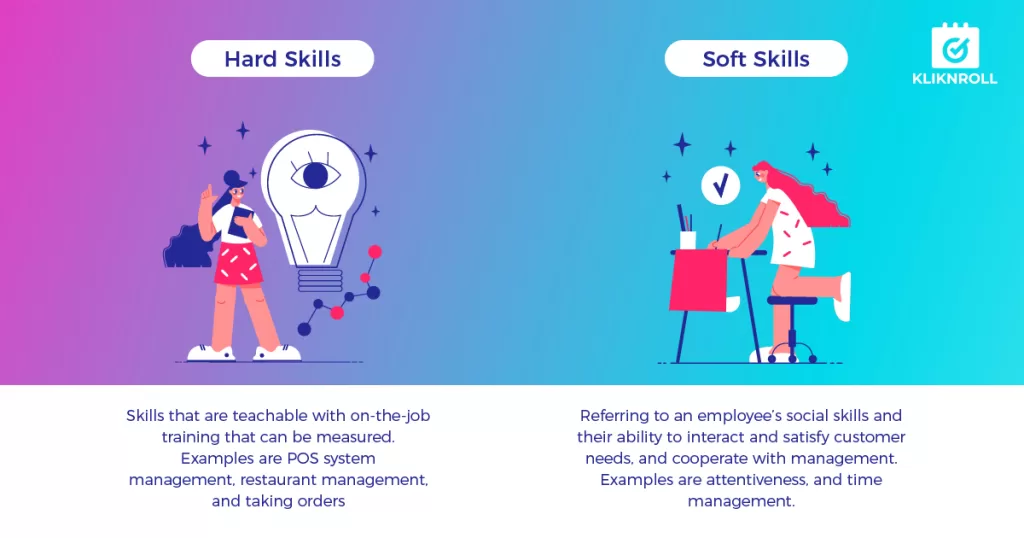
Soft skills are the personal and interpersonal skills that enable your staff to communicate, collaborate, and connect with customers and each other.
They include skills such as communication, teamwork, problem-solving, empathy, and emotional intelligence. Soft skills are essential for the restaurant service industry, as they can enhance customer satisfaction, loyalty, and advocacy, as well as staff morale, productivity, and retention.
Despite this, soft skills are often neglected or overlooked in most restaurant training regiments, as they are harder to teach and measure than technical skills.
Many restaurant managers assume that soft skills are innate or learned through experience, and do not invest enough time or resources to train their staff on them. This can lead to poor service quality, customer complaints, staff turnover, and lost revenue.
To add soft skill training to your restaurant training, do these steps:
- Check your staff’s soft skills and find what needs to improve. If you find that your staff is getting orders wrong too frequently, it might be an issue with communication or attentiveness. The key is to pinpoint and focus on exercises that can help with their weak points.
- Make and give a soft skill training program that fits your staff’s needs, goals, and ways of learning. Find out what ways your staff learns best, whether it be through experience or maybe through visuals. Not to mention, you should also aim to make the program fun, interactive, and useful, by using real situations and examples. That’s why staff teambuilding is great, as you can implement roleplaying, gather feedback, and have a real heart-to-heart talk.
- See how your soft skill training program works and change it if needed. Watch and measure the changes and improvements in your service, customers, and revenue. A cool tip is to use a CSAT form (like the one below) to collect data from your customers and detect changes in the customer service category!
Be Proactive Rather Than Reactive

Improving restaurant service means being proactive, not reactive. Being proactive means taking action and solving problems before they get worse while being reactive means waiting and reacting after something happens.
A proactive strategy gives the customer a better experience and can improve loyalty in the long run!
Proactive means meeting customer needs before they ask. The first step is to study customer behavior and find trends. Trends help avoid common problems.
Having a robust feedback loop should also be a part of your core restaurant strategy. A feedback loop mainly refers to the continuous process of collecting and analyzing data to constantly improve your business.
By being proactive, you’ll naturally provide better restaurant service, and make your restaurant stand out in your area. For more information, check out our article on anticipating customer needs to learn more.
Give Some Staff the Power to Make Decisions
Another way to improve your restaurant service is to grant some staff the power to make decisions on their own without the need to go through a supervisor every time.
Doing this decreases the burden of the supervisor, as they’re often the bottleneck in terms of resolving customer issues. This also can help in decreasing the time it takes to resolve issues with customers.
You can also increase your staff’s morale because it makes them feel valued, respected, and trusted – which could be intrinsically motivating.
Take it a step further and allow them to offer personalized solutions to regulars that they are familiar with. Personalized compensation goes a long way.
However, it’s important to grant power to staff that you deem reliable and qualified, as granting everyone equal amounts of power will probably lead to arguments.
Make sure that there’s a limit to what your staff can and cannot do. For example, remaking orders for customers is okay, as well as giving vouchers for resolution – but they cannot issue refunds as it relates to your restaurant’s finances.
Collect Data & Personalize As Much as You Can
Personalization is a key factor in the restaurant business, and there is no single solution that works for every customer.
To provide better restaurant service, you need to get to know your customers and offer them resolutions that match their needs and wants.
This can improve their loyalty and their view of your restaurant service. Loyal customers may like things like room upgrades, free wine, or discount vouchers, while new customers may like things like freebies so they can try more of your menu items and become loyal customers.
To personalize your service, you need to collect data about your customers.
You can use the CSAT survey that we talked about before, but you can also use other data, such as how long they stay in the restaurant, how much they order, how many vouchers they use, and how often they use them. If they use vouchers a lot, they may be more open to vouchers as a resolution.
Many of our clients had a big problem before working with us: they couldn’t sync online and offline data. Many CRMs on the market can analyze online data well (like from your POS system)- but can’t get offline data like how often customers stay, etc.
That’s why we’ve developed our own CRM, under the KlikNGo umbrella. Before, we only made this omnichannel data collection feature for some clients – which was expensive and resource-intensive.
Many restaurants can’t afford this feature, that’s why we used our skills and knowledge to make this a core feature that’s easy to customize by any restaurant!
With this feature and some hardware, you can get data from your restaurant and events – like customer behavior and dine-in preferences!
Through this, you’ll be better able to understand your customers and their preferences to provide better and more personalized restaurant service!
Click the button below to contact us if you’re interested!
Try Out a Loyalty Program
A loyalty program is another way to improve your perceived service. It rewards your customers for coming back to your restaurant.
There are three types of loyalty programs: point-based, attendance-based, and tier-based. The best one for your restaurant depends on how much your customers spend on average.
If your customers spend a lot, an attendance-based program will make you more money – objectively. A good loyalty program provider (like us) will mix all three types!
In terms of restaurant service, your loyalty program can act as a medium of reward, as you can give out points as a reward to encourage more repeat visits if they’re not entirely happy with the current service to give you a second chance.
Your loyalty program can be in the form of an app, where customers can give feedback right away. You can also make it give vouchers to customers who had a bad experience, and the restaurant manager can validate it on the spot!
Occasionally Give Out Freebies
Everyone loves a freebie, especially when it comes as a surprise. Giving out freebies to your customers can be a great way to improve your restaurant service and increase customer loyalty.
Freebies can be anything from a complimentary appetizer, dessert, drink, or even a small gift. The key is to make them feel special and appreciated, not obligated or pressured.
Many restaurant owners downplay the power of freebies, as they have the potential to turn a bad experience into a good one.
Even if your customers are dissatisfied with their dining experience at your restaurant, a freebie such as a dessert on the house can make up for it.
They will remember the dessert the next time they think of your restaurant, which could be the determining factor in giving you a second shot.
You want to give out freebies that are relevant and appealing to your customers, not something that they don’t like or can’t eat.
For example, you can offer a free dessert that matches their preferences, such as chocolate cake for chocolate lovers, or fruit salad for health-conscious customers.
Having the freebie on a nice plate with a personalized note can also encourage them to share it on social media, giving you free publicity!
The Bottom Line
You have just learned nine incredible ways to improve your restaurant service and make your customers happy and loyal.
Whether it’s by improving your ordering accuracy and kitchen speed, including soft skill training in your staff development or just being proactive, you can take your restaurant service to the next level and stand out from the competition.
Remember, great service is not only about pleasing your customers, but also about making your restaurant stronger and more profitable.
So, what are you waiting for? Start implementing these tips today and see the difference they make.
And if you need more help or advice, feel free to contact us at KlikNGo, the ultimate solution for restaurant service improvement. We are here to help you succeed!

Hey there! I’m Jeffrey Hau, and my journey in the digital world started after I wrapped up my psychology degree at UCLA. Imagine coming back to the bustling streets of Hong Kong from the tech haven of Silicon Valley – it was a whirlwind of inspiration! Seeing how social media platforms were evolving at breakneck speed and realizing the limitations of traditional advertising in this digital age, I decided to dive in.
In 2012, I laid the foundation of Prizm Group. From our humble beginnings, we’ve now blossomed into a global powerhouse with a team of over 200 passionate professionals. Our HQ is right here in Hong Kong, and we’ve spread our wings to SG, AU, NZ, JP, and China.
As a digital problem solver, our team found that several industries are in need of reservation systems, especially for F&B, Hotels, Beauty, and Medical sectors. Our digital magicians started crafting reservation systems tailored to cater to these specific needs. We extended our expertise to e-commerce, voucher management systems, and campaign management systems, combining them into KlikNRoll – an all-in-one solution. We deep dive into various industries, understanding their unique challenges and developing innovative solutions.
We’re not just a company; we’re your dedicated partners in transforming how you navigate the digital landscape. Our passion lies in providing businesses with intuitive and tailored solutions using KlikNRoll’s powerful capabilities.
Ready to embark on this exciting digital adventure with us? Let’s make your brand stand out in the digital jungle!
